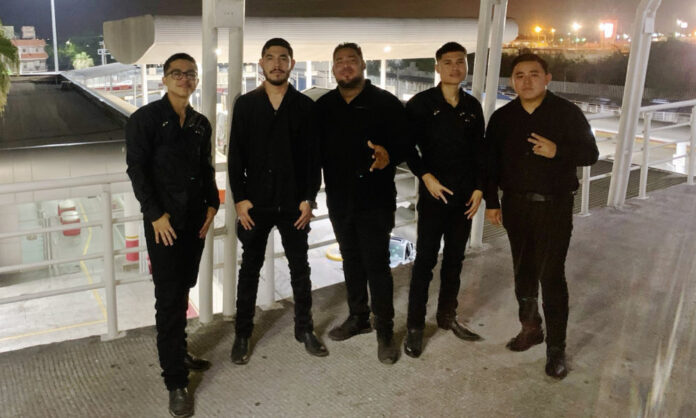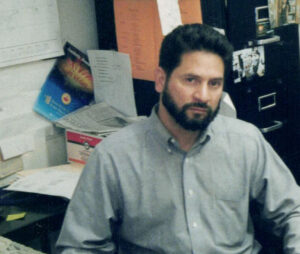While Trump has set the stage for astonishing geopolitical success in the Middle East, he’s still got to follow through
by Andrew Day
Google “crisis” and you’ll get this definition: “a time of intense difficulty, trouble, or danger.”
That’s not a bad description of the present moment in the Middle East. When President Donald Trump lands in Saudi Arabia on Tuesday for a four-day tour of the Gulf, he’ll encounter a region in turmoil and grave danger—a region in crisis. But let’s be honest: When in living memory has the Middle East not been?
Still, the etymology of “crisis” points to an equally valid, and much more hopeful, view of the region. The word comes from the Greek krisis and has carried through history parts of its earlier meaning as a turning point, for better or worse, in the progression of a disease.
In politics, a crisis is a statesman’s best chance to seize the opportunity and achieve glory, as Machiavelli would put it. “Never let a good crisis go to waste,” Winston Churchill is purported to have said.
Trump’s moves ahead of his big trip suggest he sees this Mideast moment more as a turning point—and an opportunity—than a time of extreme peril. If Trump accomplishes in the region what he seems intent on doing, then his actions might also be seen as an historic pivot in American politics.
The president wants to avoid a war with Iran and end the one in Gaza. He wants to remove troops and sanctions from Syria. He wants to strike a trillion dollars’ worth of deals with Saudi Arabia, Qatar, and the United Arab Emirates. More generally, he wants to put the lid back on a region that exploded under Joe Biden.
What’s notable about each of these goals is that Trump, in pursuing them, is acting over the heads—and against the wishes—of Israeli political leadership. In normal times, Israel holds veto rights over America’s Middle East policy, and some Israeli officials still believe that to be the case, but these are far from normal times, and Trump is far from being a normal U.S. president. Tensions are rising between America and Israel thanks to Trump’s newfound willingness to put some daylight between the two nations, which is why the Jewish state didn’t make the cut on this week’s presidential itinerary.
The latest major example of the growing U.S.-Israel divide: Trump’s team negotiated directly with Hamas, breaking from U.S. diplomatic custom, to get an American hostage released from Gaza. Before that, the White House reached a bilateral ceasefire agreement with the Yemeni Houthis—despite the group’s continued strikes targeting Israel. And Trump’s openness to letting Iran continue uranium enrichment under a nuclear deal has rankled Israel’s Prime Minister Benjamin Netanyahu.
Biden gave Bibi a warm embrace; Trump is giving him the cold shoulder.
And Trump’s special envoy, Steve Witkoff, is putting Bibi on notice. Recently, he told the families of Israeli hostages held by Hamas that their government’s refusal to end the war in Gaza was delaying the release of their loved ones. “Israel is prolonging the war, even though we do not see where further progress can be made,” Witkoff said.
In Israel, Trump is more popular than Netanyahu, and getting a hostage deal is more popular than continuing the war. So Witkoff’s provocative intervention in Israeli domestic politics endangers the prime minister’s standing. Many analysts believe that Bibi sees Israel’s war in Gaza—and its antagonisms in Lebanon, Syria, and Iran—as key to political survival. If so, then Netanyahu’s extremist government is behaving like a glorified protection racket, provoking adversaries and escalating conflicts so that “Mr. Security,” as Bibi is known, can defend the nation from threats he’s helped inflame.
The emerging possibility that Washington could reduce or cease support for Israel if Jerusalem refuses to halt the war in Gaza seems to be altering Bibi’s political calculus. That wasn’t immediately apparent. Over the weekend, rumors surfaced that Netanyahu told security officials, “I think we’ll have to detox from U.S. security assistance.” As I noted on X, the alleged comment suggested that Bibi, when given the choice between sustaining the war in Gaza and sustaining American support, had chosen the former—revealing how divorced the Israeli premier’s political interests had become from his country’s national interests.
But on Monday, Axios reported that Netanyahu, after a meeting with Witkoff, had agreed to dispatch negotiators to Qatar to resume ceasefire talks. Reacting to the news, Trita Parsi of the Quincy Institute wrote on X that Trump, unlike Biden, “used American leverage and Netanyahu caved,” and that “Trump must now sustain that pressure.”
Whether Trump will indeed sustain the pressure isn’t clear. In part that’s because U.S. politicians who take on Israel face pushback from the Israel lobby—a fact that MAGA conservatives are increasingly willing to point out. As Florida’s former Rep. Matt Gaetz noted during a recent podcast interview, “If you oppose the U.S.-Israel relationship, you face tremendous headwinds to get into government.” You also face tremendous headwinds once in government.
But there’s reason to think Trump can overcome this most formidable of political obstacles.
No U.S. president in modern times has personalized international relations to the extent Trump has. Trump’s personalistic approach to world affairs means he has a direct interest in preventing foreign leaders from getting an upper hand on him. While past presidents like Biden grumbled in private about Netanyahu’s intransigence even while publicly backing him, Trump is inclined to want his power over Netanyahu—and by extension, America’s power over Israel—to be on full display.
Trump has a more standard political motivation to stop the Gaza war: If he succeeded, his popularity, not just in the United States but around the world, would rise. Americans have soured on Israel in recent years and increasingly don’t want their government to fund the horror show in Gaza. Incredibly, a majority of Americans now express an unfavorable opinion of the country, according to a Pew report published in April. Trump would be acting in line with the preferences of the nation he leads if he convinced Netanyahu to cease fire.
He’d also be acting in line with the preferences of other nations, including Western ones with governments that back Israel. Germany, for example, has been a major funder of the Gaza war and has cracked down on speech criticizing the Jewish state—yet a new survey shows that only 36 percent of Germans have a positive view of Israel. If Trump can end the bloodshed in Gaza, he’ll not only improve America’s reputation in Muslim countries, but boost his own image in western Europe, where he is deeply unpopular.
Back in America, liberal journalists and progressive politicos have noticed Trump’s tough treatment of Netanyahu. “It’s really something to watch Trump handle Netanyahu more effectively than alleged foreign policy expert Joe Biden did,” wrote Matt Duss, former advisor to Sen. Bernie Sanders (I-VT), on X. Tom Friedman of the New York Times, in a recent column, penned an open letter to Trump praising him for bucking Bibi. “Netanyahu is not our friend,” Friedman wrote. “He did think he could make you his chump, though.”
Of course, while Trump has set the stage for astonishing geopolitical success, he’s still got to follow through. The longtime golfer has also got to hit the ball right down the middle, lest the Middle East become a sand trap for his second administration. Moreover, he’s got to act fast. The Israeli government seeks ethnic cleansing in Gaza—Netanyahu all but admitted this weekend that any other professed war aim is a “bluff”—and it plans to conquer and flatten the strip after Trump wraps up his tour of the Gulf later this week.
During his trip, Trump should make unambiguously clear that America will no longer write a blank check to Israel and that the Gaza war must be resolved in a stable and humane fashion. Rumor has it he may even declare U.S. recognition of the state of Palestine. But Israel would go to great lengths to prevent Palestinian self-determination. If Trump can at least get a ceasefire, he will have gone a long way toward breaking Israel’s hold on American politics, thereby freeing himself to rack up more diplomatic wins, including a landmark nuclear agreement with Tehran.
He will also have shown that the Middle East needn’t be a region in crisis—unless that word means an opportunity for U.S. diplomacy to build a more peaceful and prosperous world, and for a U.S. president to cover himself in glory.
Reprinted with permission from The American Conservative.













